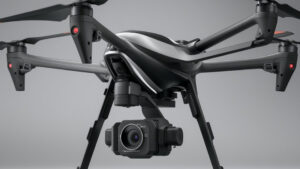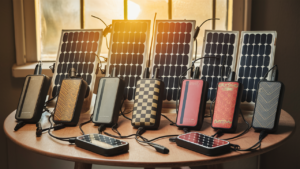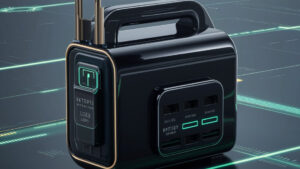To charge a motorcycle battery fully, it typically takes around six to twelve hours. Charging times may vary depending on the battery’s capacity and the charger being used.
It is important to use a compatible charger and follow the manufacturer’s instructions to ensure safe and efficient charging. Regularly checking the battery’s charge level and maintaining it properly can help prolong its lifespan and prevent unexpected breakdowns. Additionally, if the battery is completely dead, it may need to be replaced rather than recharged.
It is recommended to consult the manufacturer’s guidelines or seek professional assistance for specific charging instructions and battery maintenance.
Introduction To Motorcycle Battery Charging
Discovering how long to charge a motorcycle battery is crucial for optimal performance. Factors such as battery condition and charger type influence the charging duration. It’s recommended to follow manufacturer guidelines for safe and efficient charging practices.
| Charging a motorcycle battery can vary based on its condition. |
| Signs of a dead battery include dim lights and difficulty starting. |
| Recharging a dead battery is possible, but replacement might be needed. |
Understanding Battery Types
Lead-Acid Batteries Explained: Lead-acid batteries are the most common type used in motorcycles. They require regular maintenance and should be charged using a suitable charger to avoid damage.
AGM Batteries and Their Benefits: AGM (Absorbent Glass Mat) batteries are a popular alternative to lead-acid batteries. They are maintenance-free, spill-proof, and provide better performance and durability.
Charging Time: The charging time for a motorcycle battery depends on its capacity and the charger used. Typically, it takes 4-8 hours to fully charge a motorcycle battery, but it’s essential to refer to the manufacturer’s guidelines for precise charging times.
Preparation Steps Before Charging
Before charging your motorcycle battery, it’s important to ensure safety first. Wear protective gear such as gloves and safety goggles to prevent any accidents.
Setting up for charging is essential to ensure a successful process. Make sure to clean the battery terminals and connect the charger following the manufacturer’s instructions.

Charging Techniques Unveiled
Discover the best techniques for charging your motorcycle battery to ensure optimal performance and longevity. Learn how long it takes to charge a motorcycle battery fully and the steps to take for testing battery power. Keep your motorcycle running smoothly with the right charging methods.
| Charging Techniques Unveiled |
| Using a Smart Charger: To ensure optimal battery life, utilize a smart charger equipped with advanced technology. |
| Trickle Charging: A slow and steady approach, trickle charging involves a low current over a prolonged period to safely charge the battery. |
Determining The Charging Time
Charging time for a motorcycle battery depends on several factors. The size of the battery plays a crucial role in determining the duration. Smaller batteries may require around 4-8 hours, while larger ones might take 8-24 hours. Additionally, the state of charge when beginning the process impacts the time needed. A completely dead battery will take longer to charge compared to one with some residual power. The type of charger used also influences the duration. Smart chargers are more efficient and can reduce the time required. Furthermore, the charging current and battery voltage are essential considerations. It’s important to refer to the manufacturer’s guidelines to ensure optimal charging times for specific battery types.
After Charging: Next Steps
After charging your motorcycle battery, there are a few next steps you should take to ensure it stays in good condition:
- Disconnect the charger from the battery to avoid overcharging.
- Check the voltage with a multimeter to ensure the battery is fully charged. A fully charged battery should read between 12.6 and 12.8 volts.
- If the battery is not fully charged, continue charging until it reaches the recommended voltage range.
- Check the battery’s electrolyte levels and top up with distilled water if necessary.
- Inspect the battery for any damage or leaks, and replace if necessary.
To determine when your battery is fully charged, use a multimeter to check the voltage. When the battery reaches the recommended voltage range, it is fully charged. Remember to always disconnect the charger from the battery after charging to avoid overcharging and damaging the battery.
Troubleshooting Common Issues
To charge a motorcycle battery fully, it typically takes around 4 to 24 hours. However, the charging duration may vary depending on the battery’s condition and the type of charger used. It’s important to follow the manufacturer’s guidelines for optimal charging times and avoid overcharging the battery.
| Why Isn’t My Battery Charging? |
| Dealing with a Permanently Dead Battery |
If you’re having trouble charging your motorcycle battery, it’s important to troubleshoot common issues to determine the root cause. One common problem is a permanently dead battery, which may need to be replaced. However, before resorting to replacement, it’s important to ensure that the battery isn’t simply drained and in need of recharging. This can be done by using a battery tender or charger and monitoring the charging process to ensure that the battery is actually charging. If the battery is still not charging after attempting to recharge it, it may be time to replace it. It’s important to check your motorcycle’s manual for specific instructions on how to replace the battery, as the process can vary depending on the make and model of your motorcycle.
Maintaining Your Motorcycle Battery
Regular maintenance of your motorcycle battery is crucial to ensure its longevity and optimal performance. Performing routine checks and balances on your battery can help identify any issues early on and prevent potential breakdowns.
It’s important to keep an eye on the charging time of your motorcycle battery. Overcharging or undercharging can lead to reduced battery life and performance. Knowing when to consider a battery replacement is essential to avoid being stranded due to a dead battery.
Frequently Asked Questions
How Long Should A Motorbike Battery Be On Charge For?
For optimal charging, a motorbike battery should be on charge for approximately six to twelve hours.
Can A Completely Dead Motorcycle Battery Be Recharged?
Yes, a completely dead motorcycle battery can be recharged. It means the battery is drained and needs to be recharged before it can be used again. It usually takes about 6 to 12 hours to fully charge a motorcycle battery.
However, if the battery is damaged or too old, it may need to be replaced.
How Long Does It Take To Charge A Motorcycle Battery Tender?
A motorcycle battery tender typically takes around six to twelve hours to fully charge a motorcycle battery. It is important to follow the manufacturer’s instructions and ensure that the battery is charged in a well-ventilated area.
How Do I Know When My Motorcycle Battery Is Fully Charged?
To know if your motorcycle battery is fully charged, follow these steps: 1. Connect a voltmeter to the battery terminals. 2. A fully charged battery should read around 12. 6 volts. 3. If the reading is lower, the battery is not fully charged.
4. Leave the battery connected to a charger until it reaches the recommended voltage (usually 13. 2-14. 5 volts). 5. Once the voltmeter shows the recommended voltage, your battery is fully charged and ready to use.
Conclusion
Charging a motorcycle battery requires a careful understanding of the process to ensure optimal results. It is important to follow the manufacturer’s guidelines and use the appropriate charger for the battery type. The charging time can vary depending on the battery’s capacity and level of discharge, but generally, it takes around six to twelve hours to fully charge a motorcycle battery.
Regularly maintaining and charging your battery will help prolong its lifespan and ensure reliable performance on your rides. Remember to always prioritize safety and consult a professional if you have any doubts or concerns.








